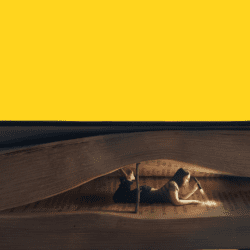Description
Introduction:
We love stories because they reveal aspects of the human condition. Literature makes people think deeply about life. We study literature while applying a biblical lens to that human condition, which is practice for applying biblical principles in our own lives. We don’t just tack on a verse of scripture in our curriculum; instead, we are diving deep into the Bible first to establish and understand what God’s word says about life and the human condition. Then we practice how to live a biblical life by analyzing and evaluating literature according to precepts in the Bible. Additionally, older, classical literature is written with rich vocabulary, beautiful imagery, layered themes, and complex sentence structures; further, they contain ideas that make us ponder ourselves and our world deeply. When we study classic literature through a biblical worldview, we can better understand our world and strengthen our Christian perspective on life. The stories chosen in this curriculum have some value of beauty in regard to the literature and help us bring out important biblical principles.
Short stories are special.
Short literature quickly introduces us to characters, settings, conflicts, and themes that relate to our lives. These authors are a special breed as well, able to craft a satisfying, thought-provoking story that we can read in one sitting. Stories reflect life and help us understand God and see ourselves and the world in which we live correctly when understood from a biblical perspective. In this course, we will use classic short stories to learn how to analyze literary devices, figurative language, story elements, characterization, theme, etc. while thinking about and discussing essential questions.
Course Type–Live Course (Weekly Subscription):
This course is a weekly subscription, which renews until you cancel or we finish the school year. It includes a live meeting once per week, and students complete homework before our live meeting. Students receive teacher feedback and traditional grades. Learners will write and complete assignments, quizzes, watch videos, and write one essay per week. If all 30 weeks are completed, this course serves as an entire year of high school English. In most weeks, students study one story. Some weeks we cover two stories in order to compare and contrast. Students work through the content in one week and there are deadlines. We encourage parent involvement. You will have fantastic conversations, I promise!
A Snapshot of One Week of Work:
- After reading and thinking about the essential questions, students write a short response explaining their initial thoughts. For example, while reading “Araby” by James Joyce and “Witches’ Loaves” by O. Henry, students study and ponder two essential questions:
- What is the difference between infatuation and love?
- What effect does infatuation have on the mind and heart?
- Students study the Bible. This includes scripture reading, watching a video lesson, or other interactive activities to build a foundation of biblical knowledge of important precepts that inform the answers to the essential questions. For instance, to answer those two essential questions, we read Judges 14 about Samson and the Philistine woman who seemed “right in his own eyes.” He was infatuated! Then we read Hosea 3 about Gomer and Hosea, a story of agape love that will move the hearts of readers as we see a picture of the gospel! Students hear video teaching from Mrs. Lemons to help them understand how these precepts relate to teenagers. They complete a practice quiz to help them solidify their understanding.
- Learners continue their preparation for reading by learning new vocabulary with an interactive activity and quiz. Then they learn a few idioms and literary elements. Last, they read a mini-biography on the author and take another practice quiz
- Finally, learners read the story and take a practice comprehension quiz. The story text and audiobook are always provided to help with comprehension. Remember, we are reading classic literature and these stories are written at the upper high school level.
- Next, students dive deeper into the literature. In this case, they study the vast religious allusions in “Araby.” They go back and read the story again, annotating and exploring in close-reading activities.
- Students evaluate the story as a piece of literature, both for its beauty and value as a piece of entertainment.
- A final, cumulative quiz measures a week’s worth of learning.
- Last, students respond to the literature through essay writing. This is their final opportunity to think through the material and synthesize all they have learned into a coherent response to given prompts related to the essential questions. This writing is graded and it may be anonymously posted to the Lemons-Aid website as an example of how to read secular, classical literature from a biblical worldview. Students are writing to a real audience and should do their best.
Classic Short Literature – The Schedule:
September-
- “Ruthless” by William de Mille
- “The Most Dangerous Game” by Richard Connell
- “Araby” by James Joyce and “Witches’ Loaves” by O. Henry
- “To Build a Fire” by Jack London
October-
- “The Bet” by Anton Chekhov
- “Young Goodman Brown” by Nathanial Hawthorne
- “The Celebrated Jumping Frog of Calaveras County” by Mark Twain
- “The Body Snatcher” by Robert Louis Stevenson
November-
- “The Black Cat” by Edgar Allan Poe
- “The Yellow Wallpaper” by Charlotte Perkins Gilman
- “Lamb to the Slaughter” by Roald Dahl
- “Rip Van Winkle” by Washington Irving
**No coursework the week of Thanksgiving. Enjoy time with your family! Your subscription will be paused automatically.**
December-
- “The Landlady” by Roald Dahl
- “The Reluctant Dragon” by Kenneth Grahame
**No coursework from December 16-Jan 6. Merry Christmas! Your subscription will be paused automatically.**
January-
- “Ali Baba and the Forty Thieves” by anonymous (Arabian Nights)
- “A New England Nun” by Mary E. Wilkins Freeman
- “An Occurrence at Owl Creek Bridge” by Ambrose Bierce
- “Story of an Hour” by Kate Chopin
February-
- “The Cask of Amontillado” by Edgar Allan Poe
- “A Good Man is Hard to Find” by Flannery O’Connor
- “The Masque of Red Death” by Edgar Allan Poe
- “A Jury of Her Peers” by Susan Glaspell
March-
- “The Tell-Tale Heart” by Edgar Allan Poe
- “A Retrieved Reformation” by O. Henry
- “The Sound of Thunder” by Ray Bradbury
- “A Case of Identity” by Sir Arthur Conan Doyle
- “The Fall of the House of Usher” by Edgar Allan Poe
April-
- “The Ones Who Walk Away From Omelas” by Ursula Le Guin
- “The Lady or the Tiger” by Frank Stockton
Doctrinal Statement
We have adopted The Master’s Seminary Doctrinal Statement. Learn more about Karen Lemons, the course author.
Parental Guidance:
***While we read many touching and sweet stories, others have mature themes, such as murder, violence, suicide, revenge, alcohol, death, prejudices, racism, guilt, betrayal, etc., and are intended for mature secondary students. For example, in Edgar Allan Poe’s classic tale, “The Cask of Amontillado,” the main character is a murderer getting revenge. He takes a drunken man down to a cellar and buries him alive. We read everything with a biblical worldview, so in this example, students learn what the Bible says about taking revenge, the potential for wickedness in men, and the dangers of drunkenness. We study a heavy dose of Proverbs with this particular story. I avoid stories with sexual themes as well as modern stories. The stories we do read are classics and most–if not all–were written a century ago or longer and are commonly read in high schools. They help students understand the world in which they live as they ponder deep questions that are as relevant now as they were then. Stories are written with a Lexile score between 700-1400. I encourage students to talk to their parents about the stories and the issues they study in the lessons.***






Reviews
There are no reviews yet.